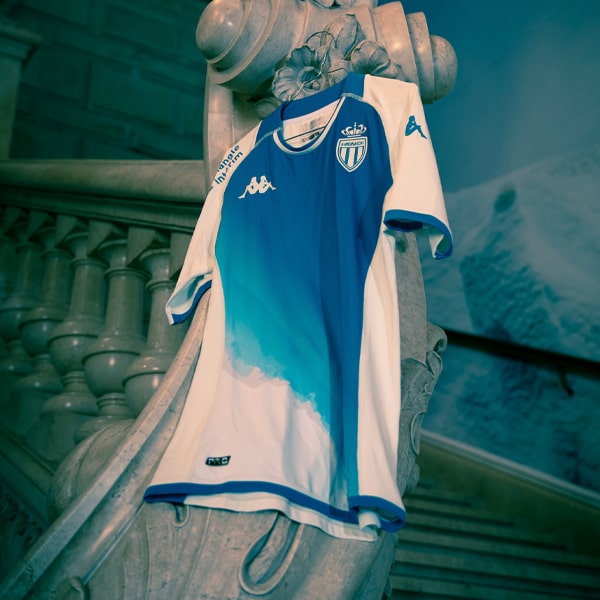From their birth at the turn of the century, brought to us on the backs of the Italian national team at Euro 2000, to the innovative approach of adidas in the 2010 World Cup and beyond, the skin tight shirt has its place in history, but does it have a place in the future?
The 90s football scene is well known and rightly hailed for its flamboyantly over-sized shirt designs as the decade adopted a one-shirt-fits-all policy that was in line with general fashions of the time. But with the turn of the millennium came a radical new approach: what if, instead of wearing these beautifully baggy bedsheets that had the technological impact of a parachute, players instead wore tight shirts, befitting of their athletic nature and stature? Madness, surely.
This significant shift in shape was heralded by Italian brand Kappa, as they brought the concept to the world’s attention first with Monaco, but then more widely when the Italian national team rocked up to Euro 2000 in what looked like rash vests that surfers would wear under their wetsuits. The original Kombat jersey was the first tight-fitting jersey in the world of football, created to stretch 40cm longer than normal jerseys so referees could spot shirt-pulls, as well as providing a light and comfortable fit. It was a revolutionary move that was ahead of its time, but it was a landmark innovation in football kit history, and one that shifted the dynamic of shirt design. Of course, the shift was a little too radical for most of the Italians, who still opted to wear shirts two sizes too big for them. Still, the skin tight era had begun.
Kappa of course followed up their skin tight designs, refining the look most notably on the absolute king of skin tight and all round don, Francesco Totti (and his Roma teammates, of course). But it was a look that was rolled out across all of their roster, which in the early millennium up to 2004 included the likes of Tottenham Hotspur, Real Betis, Auxerre, Feyenoord and Werder Bremen.
The benefits on pitch were a relatively easy sell, with the aerodynamic aspect along with the whole shirt pulling side of things, but the appeal off pitch was a bit trickier. While it was a fine look for all the adonis-like athletes of the world that wanted to show off their chiselled physiques, it was a tough sell to big Dave down the Dog and Duck. Yep, away from the elite players and pitches, you either had to squeeze your ample frame into them or, on the opposite end of the scale, they made you look like Keira Knightly from Bend It Like Beckham.
As the years rolled on from the early millennium debut, other brands got in on the act. Diadora picked up the Roma reigns from Kappa, continuing with the skin tight approach, while PUMA decided they wanted a bit of the action too, but they decided to take it to a whole other level. The "onesie" design, for those that missed it, saw PUMA countering the age old problem of untucked shirts by literally stitching them to the shorts in a ludicrous unitard design. We still haven’t figured out how the players got into them.
Cameroon famously wore the kit in the 2004 African Cup of Nations until their elimination in the quarter final against Nigeria, but the Indomitable Lions were handed a $154,000 fine and docked six-points from their 2006 World Cup qualifying group for wearing it. Several months later both parties agreed to settle out of court – with FIFA finally restoring the six points they had stripped from Cameroon’s qualifying tally. The one piece kit was thankfully never seen again.
Then adidas decided to put their own spin on the skin tight scene (or ‘ultra fitted’ as it was sometimes dubbed). They did this by introducing a new, innovation-driven approach, and specifically their TechFit PowerWeb technology, which featured highly elastic TPU bands to support the natural expansion and contraction of the musculoskeletal system while performing. The idea was that they were supposed to provide elastic support and performance enhancement of key muscle groups, increasing a player’s power, vertical leap, sprint speed and endurance. The Three Stripes had been working on this technology in other sporting arenas since the mid noughties, but it was at the 2010 World Cup that they launched it into football.
It wasn’t a hit with everyone, and certain athletes opted against the design, despite its claimed performance benefits. It continued for another couple of years, with some notable fans, such as Arjen Robben, but then base layers came to more prominence, offering similar performance benefits while also being discreet enough to be worn under a traditional shirt.
In 2014, it was PUMA’s turn once again. Their shirts featured compression tape strategically placed within the shirt to provide micro-massages on the skin, working with the human body to help maximise performance and provide players with a faster, more effective energy supply to the active muscles. Not sure about the whole massage bit, but the technology was there again, and it carried on from the World Cup into club level. Hell of a departure in the right way from the onesie. Although Suarez et al in a onesie? Would’ve been gold.
And then it sort of just went away a bit. Kappa continued to champion the look, most notably with Napoli’s virtually painted on Kombat Skin kit from 2016/17 (would love to see Higuain try and squeeze into that now!), but aside from them, brands veered away from the uber-tight fit.
Notable by their absence through all of the skin tight shenanigans were Nike. Sure they had their own array of performance fabrics and technologies, but they never went the whole hog when it came to form fitting. Could now be the time of the skin tight Swoosh? The world of concept design gives an insight into what could be possible, with designer SETTPACE often using slim fit Nike templates for his creations. As we know with most design influence, it’s often cyclical, so should we be bracing ourselves for a return to the shameless snug of skin tight fit?
The world of performance design is all about giving an athlete that extra edge. But while focus is often on boots, the kit can still play a huge part. As the game has advanced to the point where even the smallest margins can be seen as an advantage, brands have turned shirts into tools of the trade. Focusing not just on the aesthetics of the design, but more and more on the performance-enhancing functionality and what they can offer a player, their advancement is intrinsically linked to technological advances. Adidas were probably on the right track in 2010, just the execution wasn’t quite spot on, but could one of their other technologies provide the answer?
Back in December 2017 adidas revealed the Primeknit A1 jersey for the Army All-American Bowl that took place in January 2018. Touted as the evolution of the compression uniform system, Primeknit A1 places an emphasis on full range of motion, fit, form and function. A new body-mapping design features an all-new ribbed knit pattern on the chest and shoulder pads to produce a refined fit, while knit engineered mesh channels feature Climacool technology to provide enhanced breathability and cooling zones. Tech wise it's clearly the business, and aesthetically it could open up football jerseys to a completely new realm of graphic versatility.
Over the last decade, clubs and shirt manufacturers have made the shift towards selling exact replicas of the shirts that the players wear, but alongside that option also a more relaxed “supporters” fit, which doesn’t boast all the same technology but that also comes in at a significantly marked down price. So could this move open the door once more to the body-hugging look for the top tier? While the elite level shirts are constructed to be more form fitting already, there’s still space to go tighter. And if it doesn’t mean that we have to cut down on the pies and pints, then we’re all for it.




















